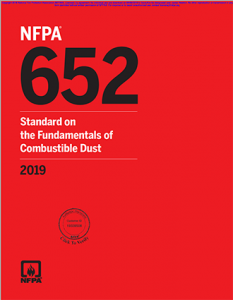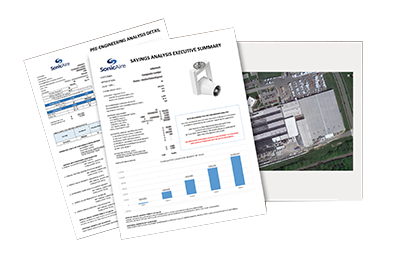
The results of each DHA affects how facility managers move forward with operations. If the DHA reveals dust build-up, effective processes are necessary to properly follow-up on the results and maintain compliance to the NFPA 652 standard. Solutions must be put in place to improve the cleanliness of the facility and mitigate combustible dust risk. This final step of the DHA is a crucial component of NFPA 652 compliance. Specific recommendations are important to properly address the hazard and demonstrate recognizable efforts to manage risk.
These efforts must be documented and completed in a timely manner to comply with NFPA 652. As processes are implemented, the DHA must be updated regularly to reflect new equipment or procedural changes within a manufacturing facility. Per the NFPA standard, this analysis must be reviewed every five years to maintain compliance. These ongoing requirements make effective, long-term solutions to dust hazard mitigation a high priority for facility managers. NFPA 652 goes on to include recommendations for such solutions.
NPFA 652 Now Incorporates Dust Control Fans as Effective Mitigation Solution

How Dust Control Fans Work
Dust control fans are a proven method to maintain clean overhead areas. This technology controls dust flow and effectively eliminates dust concerns in these areas. How? The fans robotically prevent the accumulation of dust on surfaces and in the air, which mitigates the risk of combustible dust events.
Specifically, SonicAire’s industrial dust control fans use patented BarrierAire™ automation technology to control dust flow. SonicAire is the industry leader in dust control fan innovations, and this technology has become a go-to solution to prevent dust from accumulating in overhead areas. High velocity, high mass airflow from an automated SonicAire fan creates an overhead air barrier. This BarrierAire™ technology controls the direction of the dust and forces it to the floor by preventing upward currents and stagnant air that keeps dust in suspension, preventing accumulation of fugitive dust in overhead and hard-to-reach places and maintaining NFPA 652 compliance.
Dust Control Fan Installation
Because each facility is unique, SonicAire dust control fans are designed as a custom installation that produces optimal results at each industrial manufacturing setting. Fan installations are engineered based on the size and shape of the facility, its operations, dust type generated (wood, paper, plastic, recycling, glass, grain, nonwoven lint, etc.) and any other factors that may influence dust accumulation.
Installation options include variable speed control, automatic control timers and process interlock control options. Because the fans feature top-to-bottom cleaning ranges of 0° to 140°, with full 360° oscillation, facility owners can be confident of achieving maximum efficiency and effectiveness.
Complimentary ROI Analysis
SonicAire is committed to helping you tackle combustible dust problems at your facility. To take the next step toward NFPA 652 compliance, contact the SonicAire team today. We will review your specifications and develop an ROI analysis that details your equipment investment, estimated annual savings and cumulative cashflow benefit.
About SonicAire
As the global leader in dust control, SonicAire partners with manufacturers to mitigate risk and create cleaner environments. SonicAire fans offer an engineered, robotic solution to control overhead dust and reduce housekeeping costs, while maintaining safe, compliant conditions.

